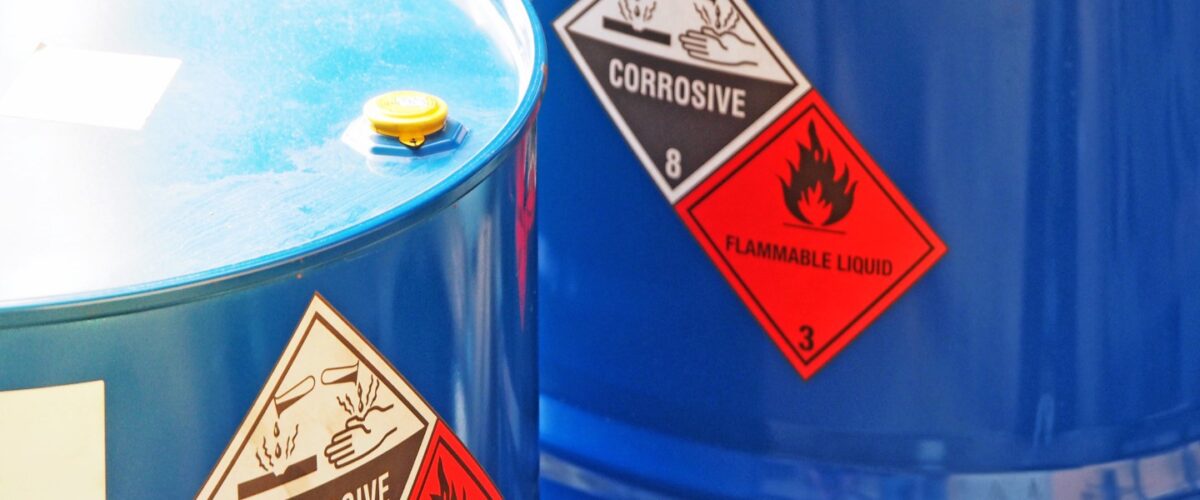- EPA (Environmental Protection Agency).
- DTSC (Department of Toxic Substances Control).
- CalEPA (California Environmental Protection Agency).
- Local CUPAs (Certified Unified Program Agencies).
- Local fire departments.
- Regional water quality control boards.
Proper installation, assessment, and certification of hazardous waste storage tanks is critical for facilities managing hazardous wastes in California. State regulations under Title 22, Section 66265.193 require that hazardous waste tank systems be periodically assessed and certified by a Professional Engineer (PE) registered in California. These certifications ensure tanks are properly installed, have adequate secondary containment, and meet stringent hazardous waste storage standards. CDMS can provide a comprehensive Tank and Containment Assessment and Certification for hazardous waste tank systems at your facility. Our Professional Engineer (PE) will evaluate your tanks and containment structures to identify any deficiencies per Title 22 requirements. After inspection, we will provide an engineered Tank Certification Report with our PE stamp affirming your tanks were assessed and are in compliance with California DTSC standards. Let CDMS handle your hazardous waste tank certifications. Certifications are most commonly required by those facilities treating hazardous waste under Tiered Permitting, which requires that the treatment system and all ancillary piping be certified by a professional engineer at least every 5 years. This assessment will consider if the tank and secondary containment tank is adequately designed and constructed, condition of the tanks, the materials being used in the tanks, piping, secondary containment, seismic bracing, etc. CDMS deliver a Tank and Containment Assessment and Certification of hazardous waste tank systems to comply with the requirements of Title 22, Section 66265.193. Tank and containment certifications will be provided by our Professional Engineers (PE) registered with the State of California. What tanks require hazardous waste certification in California? How often do hazardous waste tanks need inspection and certification? Can we self-certify our hazardous waste tanks? What standards are used to certify hazardous waste tanks? Does secondary containment need certified too? What if we find deficiencies or leaks during inspection? What types of tanks require certification? Do underground storage tanks need certified separately? Can we get certified while a tank is still in service? Are air emission control devices part of certification? What specific areas of the tank are inspected? Is tank certification different than tank integrity testing? Do tanks need to be cleaned prior to inspection? Is there a certification report provided after inspection? What if a tank fails the certification inspection? Can I review a sample certification report? Are inspection records maintained for regulatory oversight? How soon after repairs can a tank be re-certified? How long does a typical tank inspection take? Is there an appeals process if I disagree with inspection findings? Hazardous Waste Tank Certification
Regulatory bodies
Who needs it
Regulation reference
What our service provides:

Request a Free EHS Compliance Assessment
Tanks that store hazardous wastes for over 90 days require certification per Title 22 CCR. This includes storage and treatment tanks.
Initial certification is required before use. Tanks must then be recertified every 5 years at a minimum.
No, an independent state-registered Professional Engineer (PE) must perform certifications. Please Contact Us to get support or request a Hazardous Waste Tank Certification assessment. Our skilled team of EH&S specialists is ready to assist you.
Title 22 CCR standards on tank construction, leak detection, corrosion protection, etc. Professional Engineer (PEs) will check for defects.
Yes, secondary containment must be included in the certification to ensure proper capacity and integrity.
Any deficiencies must be repaired immediately. New certification is required prior to putting tank back into service.
All tanks including fixed roof, closed-top portables, tank systems, external floating roofs, etc.
Yes, underground tanks have separate regulatory certification standards per CCR Title 23.
Yes, in-service certifications are allowed but may be limited by access and crude oil levels.
Yes, devices like floating roofs and vapor recovery must be certified functionally sound.
Shell, foundation, roof, structure, rivets, welds, piping, gauges, venting, etc.
Yes, integrity testing checks for leaks. Certification is a complete assessment of design.
Not fully cleaned, but openings must be accessible and surfaces visible for inspection.
Yes, the Professional Engineer (PE) will provide a detailed Certification Report with photos, deficiencies, repair records, etc.
Immediate repairs are required. The tank cannot be used for hazardous waste until the Professional Engineer (PE) certifies corrections were made.
Yes, Professional Engineer (PEs) can provide a template report to review typical content.
Yes, records must be kept for duration of operation and for facility closure.
After repairs, the Professional Engineer (PE) must re-inspect prior to certifying the tank as compliant.
Anywhere between 3 hours and 2+ days depending on tank size, number of tanks, and ease of access.
There is no formal appeals process. However, the Professional Engineer (PE) may reconsider based on any evidence you provide.



